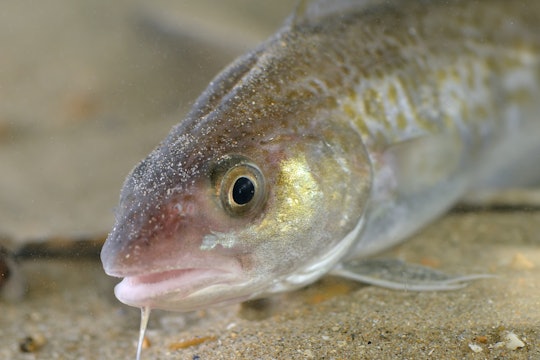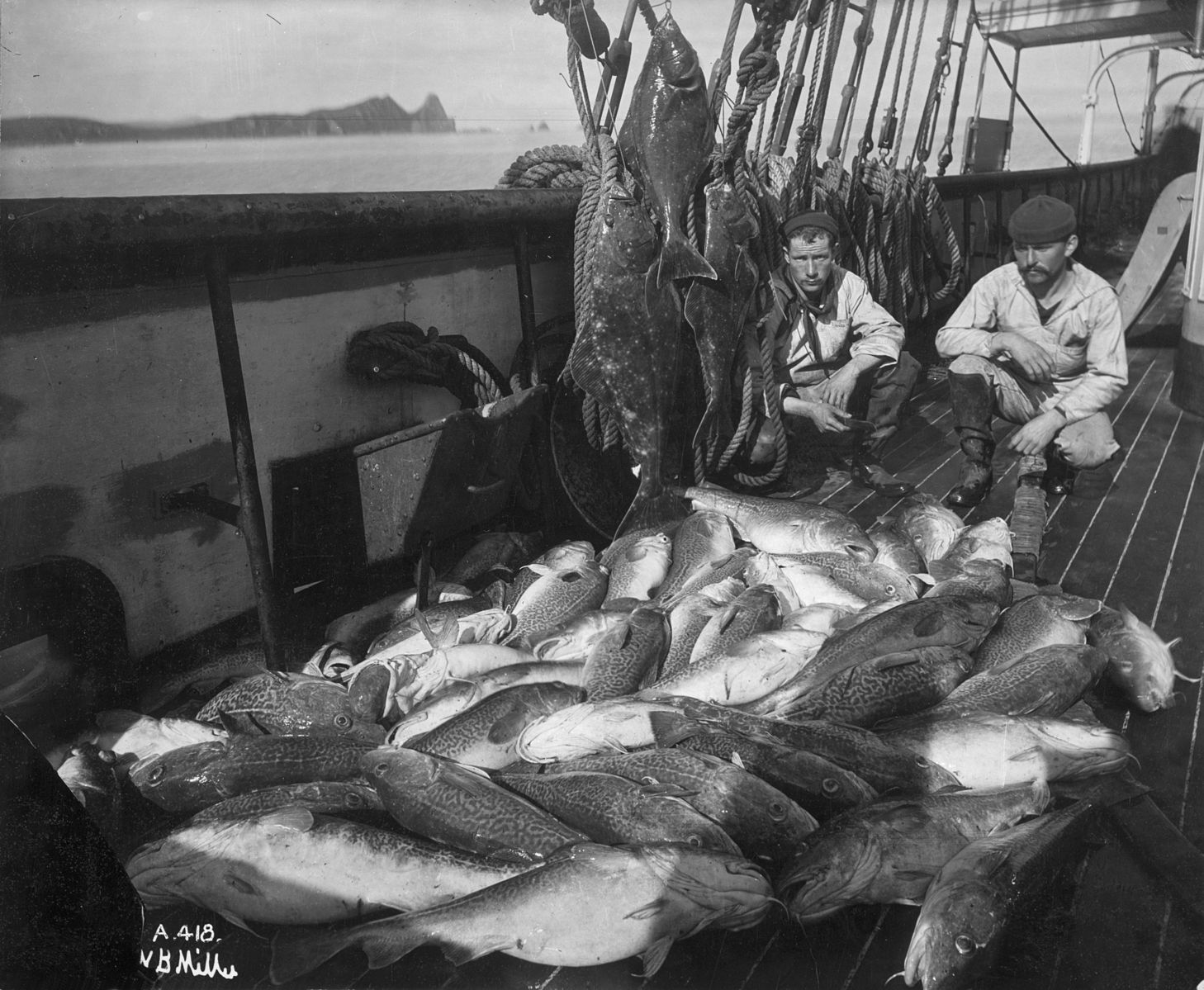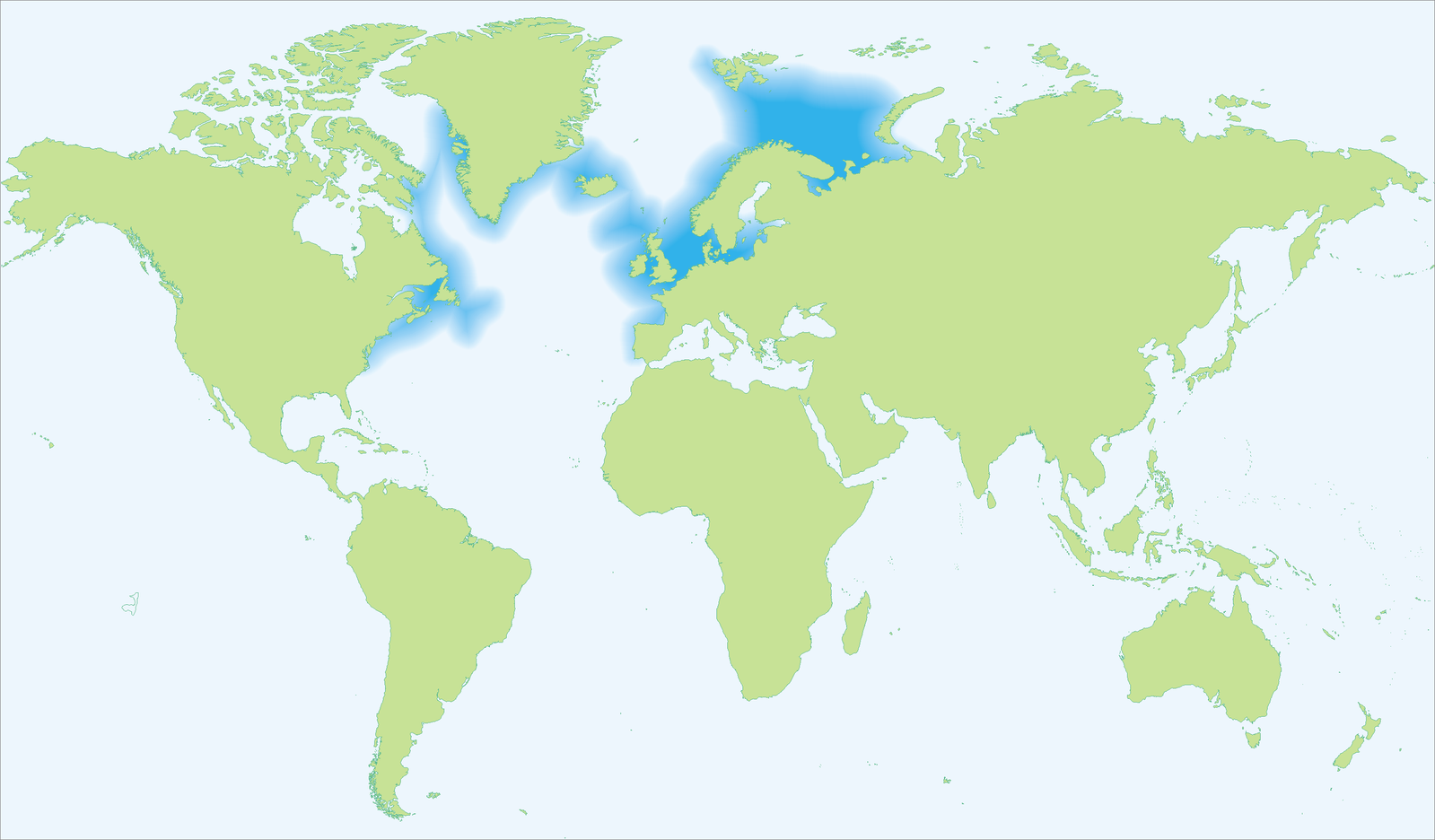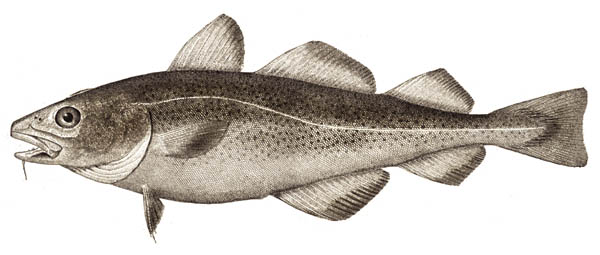
Hans Hillewaert via Wikimedia
Cod ears contain a long history of warming in the Atlantic Ocean
Bones in fish ears have recorded evidence of a trend that could mean trouble for fish
In 1976 the British Royal Navy reactivated the HMS Jaguar and the HMS Lincoln, reinforcing their bows with wood before sending them into Icelandic waters. They hoped that this would prevent the extensive damage that other warships had acquired from ramming into Icelandic patrol boats. The Royal Navy would deploy a total of 22 frigates, or small warships, to protect British fishing vessels in what would later become known as the third Cod War.
North Atlantic cod populations collapsed in the 20th century due to overfishing. While most stocks have failed to rebound, the Icelandic cod population has been steadily rising. Iceland has imposed strict catch limits on cod while other countries have failed to predict sustainable harvest quotas. But poor management isn't the only threat to cod populations. Climate change is warming our oceans and this can cause physiological stress to fish. As oceans warm, fish might struggle to survive or move north to cooler waters.

A cod and halibut fishing vessel from before 1927
Public Domain from the Library of Congress.
A team of researchers led by Gotje von Leesen used a century's worth of cod ear bones to see how Icelandic cod responded to warming waters in the past. They published their findings in the ICES Journal of Marine Science this May. The ear bones were exposed to changing water temperatures, suggesting that the Icelandic cod did not move to avoid warming waters. While this study looks to the past, it serves as a prediction for how Icelandic cod will respond to climate change in the future.
These ear bones, called otoliths, help fish maintain their balance and are a valuable research tool. Like trees, otoliths have rings that scientists can use to age fish and determine how quickly they grow. And otoliths are convenient tools: samples that are not used in one study can be kept in small paper envelopes for years until a researcher comes along with new questions to be answered.
Von Leesen and her team used cod otoliths stored at the Marine and Freshwater Research Institute in Iceland which were collected over the past 100 years. The water off the coast of Iceland was warming during this time. It had increased 0.3°C (0.54°F) by the 1990s and it's expected to warm another 1.4-5.8°C (2.52-10.44°F) by the year 2100. During this time, the otoliths acted as little thermometers in living cod, keeping record of the water's temperature.

The range of Atlantic cod.
How does a bone take the temperature of our oceans and store it for a hundred years? Stable isotopes.
Stable isotopes are variations of the same element that don't decay over time. For instance, there are variations of the element oxygen; some oxygen atoms have 8 neutrons (16O) while others have 10 (18O). The ratio of these two atoms is called delta-O-18 and its value is influenced by climate. 16O atoms are lighter than 18O atoms so they evaporate first from the ocean during warm periods. Because otoliths store these atoms at the proportions in which that they occur in the ocean, the delta-O-18 value is a proxy for temperature data.

Otolith from Pacific Cod
The team was able to create a timeline of temperature exposure for Icelandic cod using the otoliths. They extracted samples from specific rings in the otoliths and analyzed them using a mass spectrometer. This gave them delta-O-18 values used to calculate temperature values for specific years. In previous studies, researchers have used temperature data collected from scientific instruments. But these instruments only record temperatures at specific locations, often at the surface of the ocean. The values in this new study represent the actual temperatures that the Icelandic cod encountered. Von Leesen's team used these values to reconstruct a 100-year timeline of temperature exposure for the Icelandic cod. They found that the cod were exposed to warming waters, meaning they did not move to avoid it.
Scientists know that Atlantic cod tolerate some temperature variation. But past studies show negative consequences for cod that are exposed to temperature changes. An increase in temperature can make spawning sites unsuitable and increase the amount of energy fish need to function. This means that warming waters could lead to a decrease in egg survival and an increase in juvenile and adult cod mortality. So while cod might not move north as waters warm, the population could collapse under the stress of changing temperatures.

Atlantic cod
NOAA
Iceland won all three Cod Wars, despite Great Britain's show of force. During the height of the concurrent Cold War, Iceland ended their diplomatic relations with Great Britain and threatened to withdraw from NATO. International pressure on Britain grew. They agreed to limit their catch in Icelandic waters and phase-out of the fishing ground completely.
Losing access to Icelandic cod devastated British fishing communities. In Newfoundland, over 30,000 people lost their jobs after the Northwest Atlantic cod stock collapsed due to overfishing. With 13% of working Icelanders relying on the fishing industry for jobs, now is the time to safeguard Iceland's fishing communities.





I’m so happy someone talked about otoliths — I love that fish ear bones can hold so much information about the past! And the future of fisheries in the face of both overuse and climate change is an important topic!
The history is a useful way to frame the story, but it left me wondering about current management of Icelandic cod populations. You make a case for safeguarding Iceland’s fishing communities, but what would that look like beyond current catch limits? Is this information being incorporated into any management plans? I know that fish are one of the organisms where translocations can help populations get a step ahead of climate change-induced shifts in habitat suitability — I wonder if this is being considered.
I also wonder if we know whether there is a temperature threshold that would induce cod movement — if perhaps the current conditions haven’t been a drastic enough change from what they can handle, but future conditions could be?